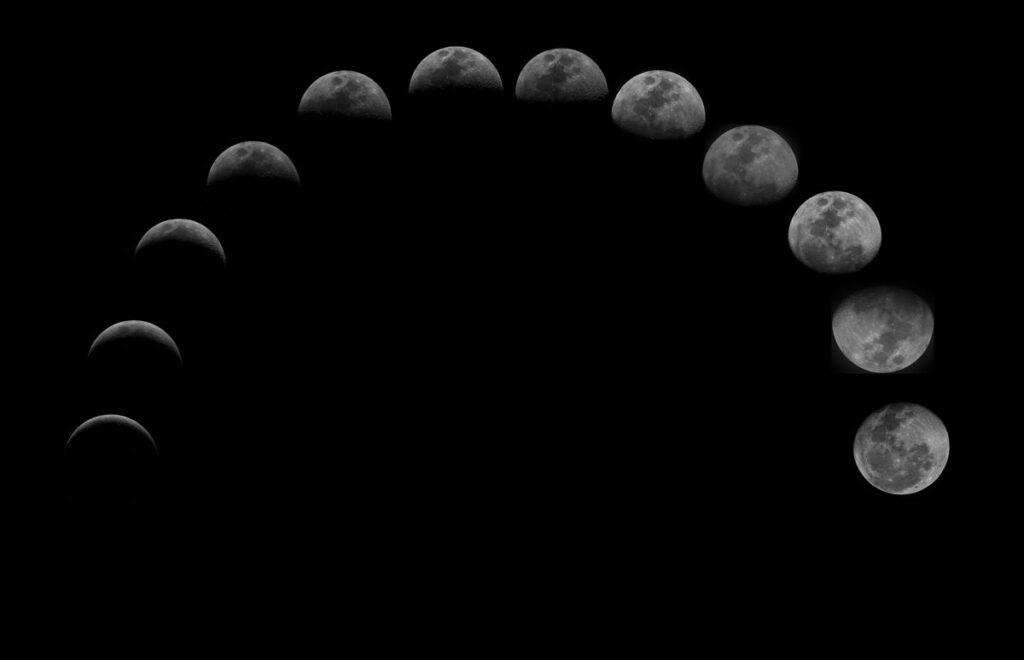
There’s a Black Moon on the rise this August 23, but unlike the ominous lyrics of a Creedence Clearwater Revival song, this celestial event is far from threatening. In fact, the term “Black Moon” isn’t an official astronomical term but rather a curious nickname that can refer to a couple of different lunar scenarios.
The current buzz surrounds an event occurring within an astronomical season, approximately three months long, that includes four new moons instead of the usual three. When this happens, the third new moon is sometimes called a Black Moon, a phenomenon that occurs roughly once every 33 months. Despite its intriguing name, the Black Moon is essentially a non-event for sky watchers, as it results in the moon seemingly vanishing into the night sky.
What Is a Black Moon?
To understand the Black Moon, it’s essential to grasp the concept of lunar phases. A new moon, the phase opposite to a full moon, occurs when the side of the moon facing Earth is not illuminated by the sun, rendering it invisible from our vantage point. As NASA describes, “Sometimes the entire face of the moon glows brightly. Other times we see only a thin crescent of light. Sometimes the moon seems to disappear.”
The lunar cycle unfolds as follows: new moon, waxing crescent, first quarter, waxing gibbous, full moon, waning gibbous, third quarter, and waning crescent, with each cycle lasting about 29.5 days. The new moon is positioned near the sun in the sky, rising and setting with it, and therefore, not visible at night.
The Mystery Behind the Name
Each astronomical season typically features three new moons, but occasionally, due to the moon’s cycle not aligning perfectly with the calendar, an extra new moon appears. The origin of the term “Black Moon” for this extra lunar event remains unclear. To add to the confusion, the term can also refer to a month with two new moons, where the second is dubbed a Black Moon, akin to the term “Blue Moon” for the second full moon in a month. This type of Black Moon occurs slightly more frequently, about once every 29 months.
Why the Black Moon Matters
Despite being an invisible event, the Black Moon is a topic of interest, particularly on the internet. The true value of a Black Moon lies in the unique stargazing opportunities it presents. With the moon absent from the night sky, the visibility of celestial objects such as meteors, galaxies, and nebulas improves significantly.
“Being able to see the Milky Way is your best bet,” said Jeff Rich, an astronomy outreach coordinator for Carnegie Science. “When the moon is up, it’s causing light pollution in the same way that we cause light pollution in urban areas. So it just makes it harder to see things that are faint.”
For those keen on taking advantage of this opportunity, Rich recommends reaching out to local astronomy clubs for advice on the best stargazing spots and equipment.
Looking Ahead
The Black Moon serves as a reminder of the intricate dance of celestial bodies and the unique phenomena that arise from their movements. While it may not offer a visual spectacle, the Black Moon provides an excellent chance for astronomy enthusiasts to explore the night sky in greater detail.
As we look forward to the next occurrence of a Black Moon, it’s clear that these rare events, though subtle, enrich our understanding of the universe and our place within it. Whether you’re a seasoned astronomer or a casual stargazer, the Black Moon invites us all to pause and appreciate the wonders of the cosmos.







